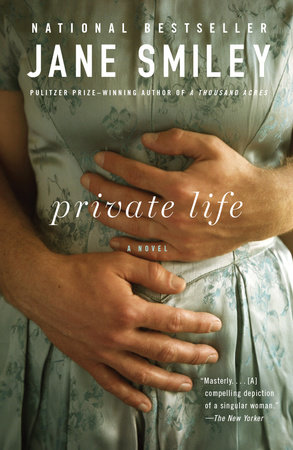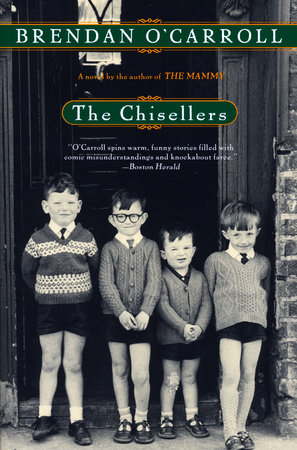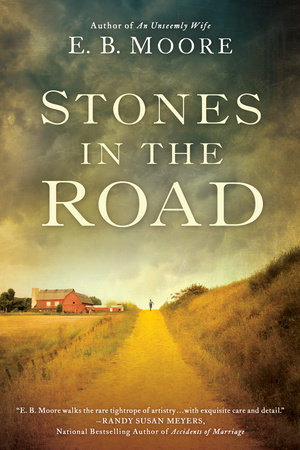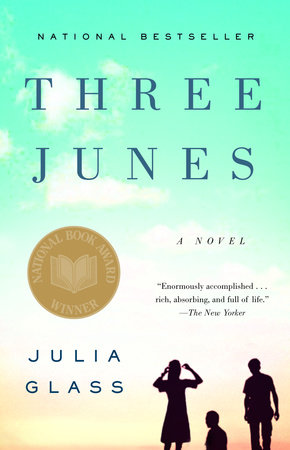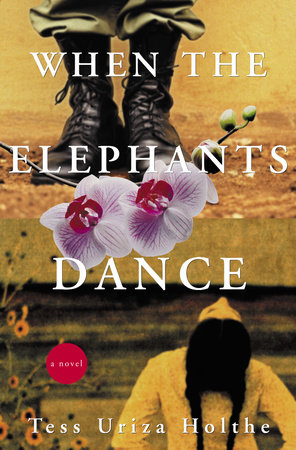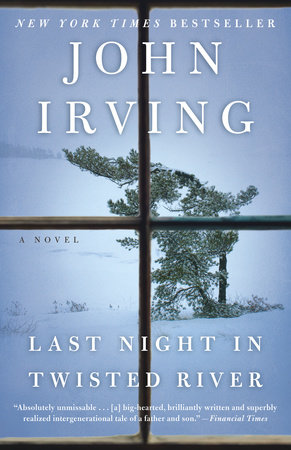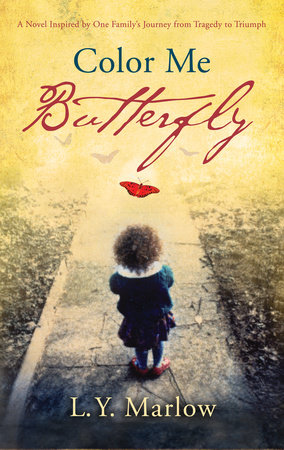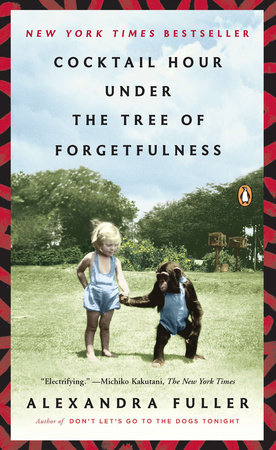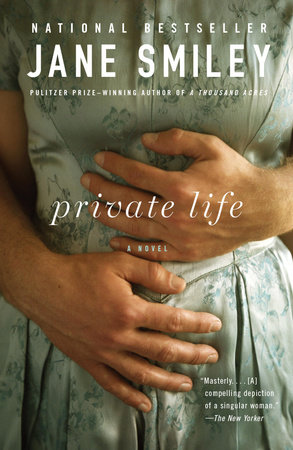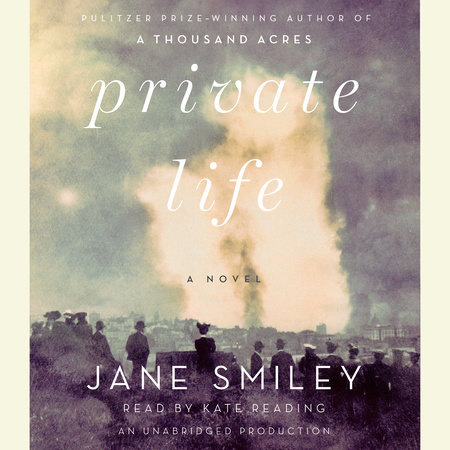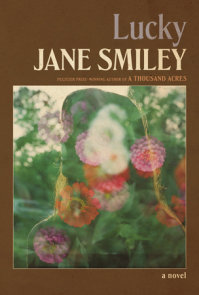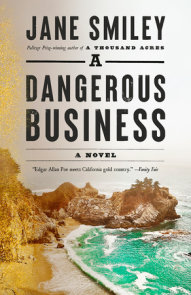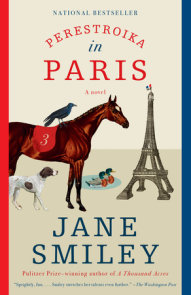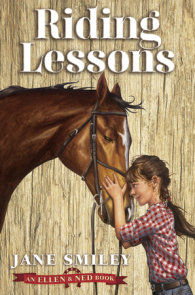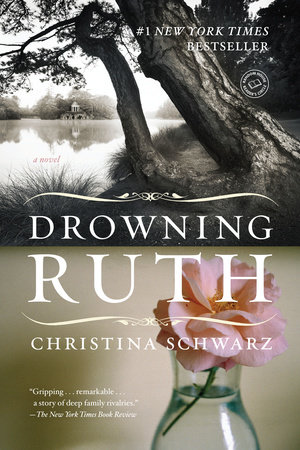Author Q&A
Q: Some of the characters in Private Life are based in part on members of your own family—your main character Margaret Mayfield on your great aunt, Frances See and Andrew Early on her infamous scientist husband Thomas Jefferson Jackson See, a naval astronomer whose increasingly implausible theories made him an outcast in the scientific community. Did you ever meet them?
A: I didn’t know my aunt at all, or her husband. She died when I was about two or three. She was my grandfather’s much older sister—he was the youngest of ten children and she was number two or three. But my mother and her siblings were quite fond of her. As for her husband, they thought he was just an eccentric family uncle, and I don’t think they realized how infamous he was in the physics establishment.
Q: How much of Margaret and Andrew draw from your aunt and uncle’s actual experience and how much is purely fictional?
A: There were only a few family stories that revealed personal details about them—for example that she drove an elderly Franklin and had a good sense of humor. My mother had visited her in the nineteen-forties, I think, and she remembered that my aunt loved Oriental art (a trait she shares with my character Margaret Mayfield). But almost everything else about Margaret is made up. I could not seem to get her sense of humor into the novel—the material was just too dark for me. My uncle is more famous, and there were plenty of stories about him—almost all of them revealing him as appallingly egomaniacal and obsessed. There was an article about him in a physics journal which described him, essentially, as the kind of scientist you were not supposed to be.
The important thing to remember is that Margaret and Andrew take some of their inspiration from these real people, but the story about them—that is, the plot of the novel—is entirely made up by me. All of the other characters and all of the events of the novel are fictional. For me, the center of the idea was in wondering what it would be like to be married to someone like Andrew, but there was no family evidence to say how my great-aunt felt about it. Just as one example, I had to prune both Margaret’s and Andrew’s family trees—both had countless brothers and sisters that would overwhelm a 300-page novel. I also had to concoct a fascinating mother for Andrew—but Mrs. Early is a theory on my part, not a portrait of anyone related to Thomas Jefferson Jackson See. While I was working on the novel, I thought of Henry James, and his fear of “developments”—that the inspiring material would proliferate and get out of control.
I was also interested in the idea of Missouri and St. Louis at the end of the 19th century, after the Civil War and around the time of the World’s Fair. St. Louis is a beautiful but strange city. Because of climate and epidemics of disease, in the mid-19th century, it was considered one of the worst places in the U.S. to live, but it was actually very cosmopolitan and self-satisfied, with beautiful architecture and thriving commerce. Right in the center of things for some decades.
Q: Did you have to do any research into their lives? Into the science and astronomy that Andrew studies? Or the historical events this novel spans?
A: I visited their house in Vallejo and also Mare Island, where the U.S. Navy had a base and a ship-building yard from about 1850 through the Second World War, twice, and I also read about See. His Moon Capture theory was included in a book about the moon that was published a few years ago. He is a presence on the Web, but he is still considered too “Newtonian” to be respected for anything. The scandals in Dr. Andrew Early’s life are somewhat similar to the scandals in Dr. See’s life. The key for me was in trying to see things through his point of view—to make a logic system that made sense to him even though it didn’t make sense to anyone else. I think that it is easy for a novelist to understand a conspiracy theorist—the story gets bigger and bigger, and it all just fits together in one’s mind. The person creating the story simply cannot understand why it doesn’t make sense to others. I think the most telling article for me was a piece See published in the San Francisco Examiner called “The Ether Exists and I Have Seen It.” The article was from about 1925, and included six pointed figures See had drawn. Even to an English major like me, this was absurd. However, I think that if he were still alive, he would insist that he had predicted the discovery of Dark Matter.
Q: This novel spans a large period of time (from 1883 to 1942, so from post-Civil War Missouri to mid-twentieth century California) and is filled with the rather epic, and public, transformative events of the last century. Why did you decide to title it Private Life?
A: The events are important, but what I was interested in was how a person lives through them and experiences them—how she interacts with them, and what they feel like and mean to her. The other important thing is how they open her up. As I have gotten older, I think that public events have gone deeper for me and had more meaning. For Margaret, the dangers of various public events open her up in a way that she doesn’t quite understand. I think one part of the movement of the book is how she comes to understand a pivotal public event she experienced in her early years.
Q: The great San Francisco earthquake features prominently in this novel. Why did you decide to include that event and make it loom so large in the lives of your characters?
A: I had to include it because it was there—Margaret and Andrew move to Mare Island, and they could not have lived there and not experienced the earthquake, so I was obliged to put it in. But that’s a thing I love about writing novels—you start out with a fairly small idea and then life intrudes, and you have to accommodate it and make something of it. You don’t exactly know what you are doing, so you do something, and it feels right or wrong. In this case, the loss of a main character in the earthquake felt right—and how that loss affects Margaret and Andrew together is a telling aspect of their relationship.
Q: You have described this novel as “A parable of American life.” What do you mean by that?
A: Andrew is a famous man and a genius. His town is proud to have produced him, and he is very conscious of his Americanness—he is the new man from the new world in the new century. And then he isn’t. But he never loses that sense of entitlement. Margaret seems to me like many well-meaning Americans who are caught up in the schemes of our more grandiose and overbearing citizens. What are they doing? How should we feel about it? Should we stop them? Can we stop them? If we can’t stop them, then what? When the people around you consider themselves visionaries, then you are in part responsible for their actions. That’s what I mean by her marriage being a parable of American life.
Q: You open the novel with the following quote from Rose Wilder Lane, “In those days all stories ended with the wedding.” Why this quote?
A: Rose Wilder Lane wrote a book about growing up in 19th century Missouri called Old Home Town. She was an interesting woman in many ways—she was the daughter of Laura Ingalls Wilder, and a very busy, well traveled, and prolific newspaperwoman, beginning in about 1900. Some people think that she ghost-wrote the Little House series—if not, then she certainly helped write it. She later became a libertarian, and one of the originators of modern Libertarianism. If you look at her picture, she has a plain but interesting face. I used her as the inspiration for the character of Dora and adopted her into the rich side of my St. Louis family, and set her up in a house by Forest Park, and sent her to Europe. I am very fond of Dora, and I think she represents a certain type of liberated woman of her day.
The essential question of the book, I think, is “what does marriage mean?” In those days, the choices were pretty stark, and so there are several different marriages in the novel. Margaret’s sisters are desirable—Beatrice because she has a claim to a large property and Elizabeth because she is young and charming and has good connections. Dora and Margaret are less desirable, and so the one has a subtly arranged marriage, and the other takes advantage of Progressivism to not get married at all. But the previous generation suffers, too—Dora’s mother is held in contempt by her husband and Margaret’s mother is widowed early and suffers considerable hardship both married and as a widow. So the real theme of the novel is marriage—who do you marry, how is the marriage to be lived through, what does it feel like to, more or less, place a bet and then live with the consequences?
Actually, most women’s stories BEGIN with the wedding, but that’s not the story most novels that Margaret might have been reading addressed. Even now, the novels that continue to be most beloved, like Pride and Prejudice, end with the wedding. For Margaret, reading does not offer her a way to think about her life as it changes or the problems that the 20th century presents. I don’t think these issues have disappeared, either. Marriage is more of a choice now, but the issue of how do you co-exist for a long time with someone who may be very idiosyncratic is still a big one.
Q: In Private Life you capture how men’s lives have a way of taking over women’s and then you give us Dora Bell, Margaret’s brother-in-law’s sister who is such a wonderful character and in many ways Margaret’s opposite. She is a writer who bucks convention, always speaks her mind, travels the world, doesn’t marry. Did you want to offer a flip side to Margaret’s married life?
A: Dora is a girl her mother despairs of, who is simply too unorthodox and plain to find a regular husband. What is she going to do? Well, one thing she is going to do is have a sense of style. Another thing she is going to do is see the world, and still another is not be told what to do. I think one thing that happens to everyone that is fascinating is that we see the lives of our friends diverging from and contrasting to our own lives, and we contemplate the contrasts, and what they say about our friends and about ourselves. The counterpart of Dora is Pete, a somewhat suspicious character she brings into Margaret’s life. He is Russian and has gained and lost several fortunes. I wanted Pete and Dora to represent another side of life as it was being lived a hundred years ago—dangerous, exciting, and dramatic.
Q: Can you tell us a little about the Kimuras and the role they come to play in Margaret’s life?
A: My great Aunt loved moving from Missouri to California, and one of the reasons was that she came to love Japanese and Chinese art. I share her fascination with those paintings and prints. To me they are much more mysterious and grand than European art—not in size, but in concept. For Margaret, her interest in Japanese art is a way of possessing something, but because Andrew considers her his possession, it backfires as the war approaches. There was a small neighborhood in Vallejo known as Japantown, and the Japanese presence in San Francisco and in California as a whole has always been very important culturally, as well as politically charged. I tried to imagine a set of characters that would be realistically alluring for someone like Margaret, who would serve as a contrast to her life, but also have their own story. What actually happens between Margaret, Pete, Andrew, and the Kimuras is entirely made up, since I knew nothing about my aunt’s love for Japanese and Chinese art other than that is existed.
Q: Andrew has all sorts of paranoid theories but he has a particular obsession with Albert Einstein who he believes is a fraud and also believes has come to California to spy on him (and on America). Why is he so fixated on Einstein?
A: I think if someone feels himself to be a great genius, then he is ready to joust with the one whom he considers his most dangerous rival. No one in Andrew’s life considers Andrew and Einstein to be on a par—except, of course, for Andrew. He becomes fixated on Einstein because he simply cannot accept Einstein’s ideas and can’t figure out how to stop them. He sees himself as a Lone Ranger type, preserving the truth from the encroachments of idiocy. There are so many novels and non-fiction works about geniuses who were right in the end. But what if the genius is not right in the end? There are more of those and Andrew is in that camp for certain.
Q: Margaret has a hazy memory of being taken, as a child age five, by her brother to a public hanging. The hanging, which she claims not to recall in any detail, is mentioned in passing several times during this novel and then comes to feature prominently at the novel’s end. What about this formative event in her life made you want to return to it as a kind of bookend to her story?
A: I think the hanging stands for all the traumas of Margaret’s not very unusual Missouri childhood that she had to endure without really processing. She has no way to process it, really, except to sort of avoid trouble. And it’s not only the hanging itself, which is traumatic, but a moment during the hanging that only happened by chance that is in some sense the most traumatic. But she is expected to deal with it and go on—everyone else does, don’t they?
Q: Having grown up in Missouri, like Margaret, and eventually settling in Northern California, do you feel a particular affinity for the places in this novel? How has this particular geography shaped your own life?
A: Missouri is a strange and beautiful state, and has produced some interesting writers—Twain, of course, T.S. Eliot, Langston Hughes, Kate Chopin, Evan S. Connell. Tennessee Williams grew up there. There are lots of us. Missouri is where the East and the West and the South bang together, and co-exist in a beautiful landscape. Missouri is always a little behind the times and a little ahead of the times—your sense of being cosmopolitan comes from history.
I love California. It is far far away and right in the center of things all at once. California is in some ways incomprehensible, but I love having the opportunity to think about it. At one point, Margaret reads Two Years Before the Mast by Richard Henry Dana, Jr. In that account, California is utterly mysterious and remote, and twenty years later, it had been entered and settled. I still feel that sense of the wild and the known when I look out my windows.
Q: Even with all their flaws do you feel a certain affection for Margaret and Andrew?
A: I am fond of Margaret, and I sympathize with her from beginning to end—I think she is a tragic figure. She is generous and kind and well-intentioned, and as her friends say, a good person. She’s also intelligent. She reads newspapers and books and tries to do the right thing. But she is never equipped by the standard wisdom of her day (given to her by relatives and friends) to understand either her husband or herself. I think this is true, in fact, of us, too. It is part of the human condition to be always trying to put two and two together when in fact the numbers, unbeknownst to you, are three and four, not two and two, and just when you’ve come up with the answer, you realize that it’s wrong. Can a normal woman be a tragic figure in literature, and not merely a “poor thing”? I would like to think so. But the one I really, and somewhat surprisingly came around to understanding better was Andrew. He is appalling in his way, but, while I don’t agree with him, and would run the other direction if he came into the room, I see his point of view. How can he not engage in his passion? How can he not attempt, over and over, to take lemons and make lemonade? His mind is always working, but his ego is always working, too. That’s the sad thing.
